-
Senior Member
registered user

Originally Posted by
winsnomore
Harry .. I am new to Knoppix, your point is well taken regarding such issues.
However, I am yet to come across ANY linux distro that doesn't have warts .. all need fair amount of work to get them to do what you "expect" .. so you fix it all and then the next release comes, and you are back at it again.
I will double check and post, but as I said before, this problem most likely is in both live-cd and hd-install.
This is purely a personal opinion & does not reflect the official opinion of Knoppix.net nor does it reflect the opinion of the Knoppix developers. The great majority of this post was not actually written in response to you but in response to tens of other people who intend to install to the HD. I include it all here because it is all pertinent.
Do you realize that Knoppix 4.0 is a brand new release that perhaps 99.99% of all the people here (including myself & all the moderators) are not able to test it prior to its release? I even asked Klaus Knopper himself, but it was too late, the DVD ISO had been finalized & shipped to the DVD duplication service. We know that every release brings new changes, features & bugs. That is to be expected. However, a HD install and all the problems that it brings is both NOT NORMAL Knoppix & NOT truly Debian.
My recommendation is based on the multitude of problems I see in the forums. I believe beginning Linux users or newbies should not install Knoppix to the hard drive. I also must mention that yes Knoppix is based off of Debian, but Debian developers, mentors & helpers do not consider a Knoppix hard drive install to be truly Debian. Thus, they will not attempt to support a Knoppix installed HD system.
A car is not designed for a good night of sleep. You can sleep in a car but unless you are dead tired, it is something that probably should not be done. Knoppix is not designed to be installed to the hard drive. It is designed to be a bootable CD. Sure it CAN be installed to the HD but it unless you are very experienced, it is something that should not be done. Or in other words, a hammer is a good hammer but make a poor knife.
There are email mailing lists, howto guides, & forums where people are telling others that a Knoppix HD install is OK for newbies. I feel that they may not be fully informed and may cause more problems that they fix. A Knoppix install on a HD is very difficult to administrate, add/remove software & get new drivers. Some may feel that they can deal with the oddities & the quirks, but if it were all easy, then why are there so many people with problems after a HD install. A Knoppix HD install will most likely break something, usually networking. A perfect real example of such is this topic within the past week: http://www.knoppix.net/forum/viewtopic.php?t=19522 "Help please - how do I install a ethernet card driver???" Read that quickly & you will realize that we had to support this user with way more technical geeky commands than you would normally find in a HD install of a normal distro.
A couple reasons why you should believe me over someone else on some other forum or mailing list. I realize that you don't know me from any other guy so I will explain my opinions further. I try to be humble & not mention it, but I am a Linux & Unix systems administrator employed at one of the top 4 software companies in the world (hint: not microsoft). I have used Unix since 1995 & Linux since 1996 when I first used RedHat and ended up destroying my Win95 partition. I know Knoppix. No, I really know knoppix. I wrote a HOWTO on making your custom own Knoppix CD: "HOWTO: Remaster the easy way using menu based scripts. I reviewed "Knoppix Hacks" for NewsForge.com. I gave a talk on knoppix customizing & remastering at my local Linux User Group, LILUG. You can find my OpenOffice slide, a PDF, and even a ISO download of the custom knoppix CD 3.8.1 that I made.
So who cares about my opinion on whether or not Knoppix should be installed to the HD. What do Debian developers & users say in regards to the HD install of Knoppix? Debian users/devs on #debian on IRC freenode.net deny support to Knoppix users & tell them to go to Knoppix.net for suppport. See also these Debian mailing list posts about knoppix.
2004
http://lists.debian.org/debian-user/.../msg01452.html
http://lists.debian.org/debian-user/.../msg01494.html
2005
http://lists.debian.org/debian-mento.../msg00203.html
http://lists.debian.org/debian-mento.../msg00208.html
It is my opinion, that if new user want a boot from CD drive then they should use a Debian based live CD like Knoppix. If they want to install Knoppix to the HD (which is really a modified Debian) then skip Knoppix & install Debian 3.1 (released Mon June 6). If they want a pre-configured user-oriented desktop PC, not server, distro based on Debian then use Ubuntu (GNOME desktop) or Kubuntu (KDE desktop) or see RedHat backed Fedora Core 4 (released June 13). If they want a real noob friendly desktop Debian based distro & are willing to pay a small yearly price for support & software updates then they can use Linspire.
Debian 3.1r0a is a total of 14 CDs or 2 DVDs. The 14 CD set is every package in the Debian stable respository, about 9000 packages. Which is way more that you or I will ever need. CD #1 has the most common packages on it. From CD 1 you can install a basic desktop (both KDE & GNOME) or setup a basic server. For those folks constrained by a slow internet connection, then I would recommend either only 1 or just CDs 1 & 2. I have read Debian developers ranked the most popular/frequently installed packages & then build each CD from that lists. This means that the average user will find it very unlikely to ever need a package from CDs 5-14.
The following is a couple days old but is still appropriate. It is my install log of Debian 3.1r0a.
Executive Summary: If you need a desktop system install CD & will not be doing sysadmin setups of servers or less popular programs then CD#1 is all you will need. Total time 36 minutes to install both KDE & GNOME as desktop Debian system. You can follow along by using this gallery from OSDir.com http://shots.osdir.com/slideshows/sl...se=361&slide=1
I started at 1:30pm Eastern & a test PC (Pent III 833MHz, 384 MB RAM, 32x CDROM, 20 GB HD, hda1 is windows NTFS, hda2 is a ext3, hda3 is swap) with CD 1 of Debian 3.1r0a, 650MB (Debian sarge). I used the boot prompt cheat code linux26 to force it to install the 2.6 kernel. Both 2.4 & 2.6 are included but the 2.4 kernel is used by default.
The hard drive partitioner is not as easy as qtparted or as easy as Suse/Redhat/Mandrake. In the menu I selected the manual partition entry. The I selected hda2. I told it to use it (by default it will not use existing data partitions so that the existing partitions are safe from accidental erasure). I told it to use ext3fs and use it as the root partition. By default it found the hda3 swap partition & automatically set it to be formatted as swap. Once I was sure, I confirmed by partition choices & it formatted the partitions & began installing the base packages. After it finishes the base packages, it will ask to install grub to either the MBR or the first sector of the root partition. It applys grub to the system & then ejects the CD & reboots the system.
Now it boots of the installed base system & brings up a welcome screen. At this point I put CD 1 back in the drive. I confirm my choices for clock, timezone, root passwd, add a new user with passwd. Then it will scan the CD for the package lists as it is building a new dpkg lists for the system. It will ask if I have another CD. I respond No. Next it automatically uses apt-get to connect to the Debian security updates at security.debian.org. Then it will quickly load a package from CD & bring up another menu. This one allows me to select what package categories to install. Choices are Deskto enviornment, Web server, Print server, DNS server, File server, Mail server, SQL database, manual package selection.
I choose only the Desktop environment. It tells me it has found 329MB of packages from the archives (the CD) & will after unpacking will use 936MB. The next screens are to select the video hardware & configure the X server. In some cases the HW autodetection routines will automatically pickup all the details. On other systems with different HW, it will not, and you will have to choose the right X drivers etc. After this it will do the standard dpkg "selecting foobar" "Unpacking foobar".
Right now it is 1:56pm and the dpkg system is still setting up the packages. At 2:01pm it brings up a menu for choosing the style of email delivery. This menu is way too confusing for newbies. It defauts to local delivery; not on a network & that is what I choose. It now prompts for the username or the person to receive the root & postmater mail. I choose real-root. Then it tells me that everything is done & thanks for choosing Debian. I hit OK & it brings up gdm & then displays a GNOME login screen. I login as the user I created: james. It loads up a Debian styled GNOME 2.8 desktop. I go to actions, logout, hit OK to confirm. Back at the login screen. This time I go to the Session menu & choose KDE. I login as james & it asks me if I want to make KDE the default dekstop. I click "Make Default". It loads up the KDE personalizer. USA & English are already selected as county & language. All the choices are really subjective so I choose what makes me happy. It then loads up KDE 3.3.2.
Time is 2:06pm.
Total time 36 minutes to install both KDE & GNOME as desktop Debian system.
 Posting Permissions
Posting Permissions
- You may not post new threads
- You may not post replies
- You may not post attachments
- You may not edit your posts
-
Forum Rules

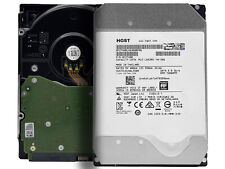
HGST Ultrastar HE10 HUH721010ALE600 10TB SATA 6Gb/s 7200RPM 3.5" Enterprise HDD
$74.99
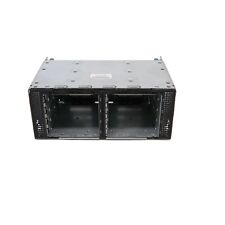
HP Hard Drive Cage w/ Backplane 670078-001
$233.99
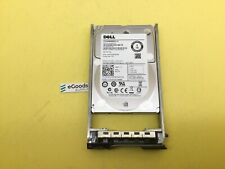
WF12F DELL 1TB 7.2K 6GBPS SATA 2.5'' HDD HARD DRIVE ST91000640NS 0WF12F
$25.00

Seagate BarraCuda ST2000DM008 2 TB Hard Drive - 3.5" Internal - SATA (SATA-600)
$99.56
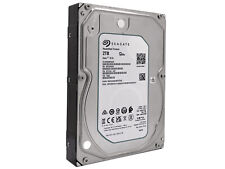
Seagate Exos 7E10 ST2000NM000B 2TB 7200RPM SATA 6.0Gb/s 3.5" Internal Hard Drive
$29.99
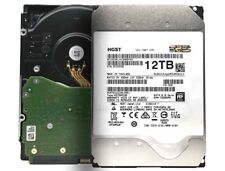
HGST Ultrastar DC HC520 12TB SATA 6Gb 256MB 3.5" Enterprise HDD- HUH721212ALE601
$82.99

2 PACK Seagate ST1000LM035 Mobile HDD 1TB 2.5" SATA III Laptop Hard Drive
$27.49
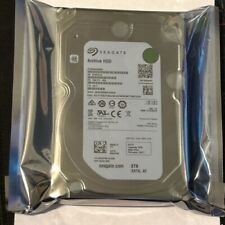
8TB Seagate Archive SATA 3.5" HDD Hard Drive 100% Healthy 200MB/s ST8000AS0002
$36.53
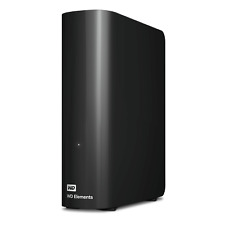
WD 16TB Elements Desktop, Certified Refurbished Hard Drive - RWDBWLG0160HBK-NESN
$174.99
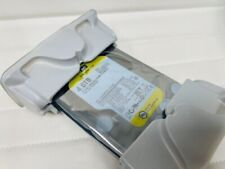
Western Digital WD4000FYYZ RE 4TB 7200 RPM 64MB Cache SATA 6Gb/s 3.5" Hard Drive
$28.49
Originally Posted by winsnomore



 Reply With Quote
Reply With Quote










